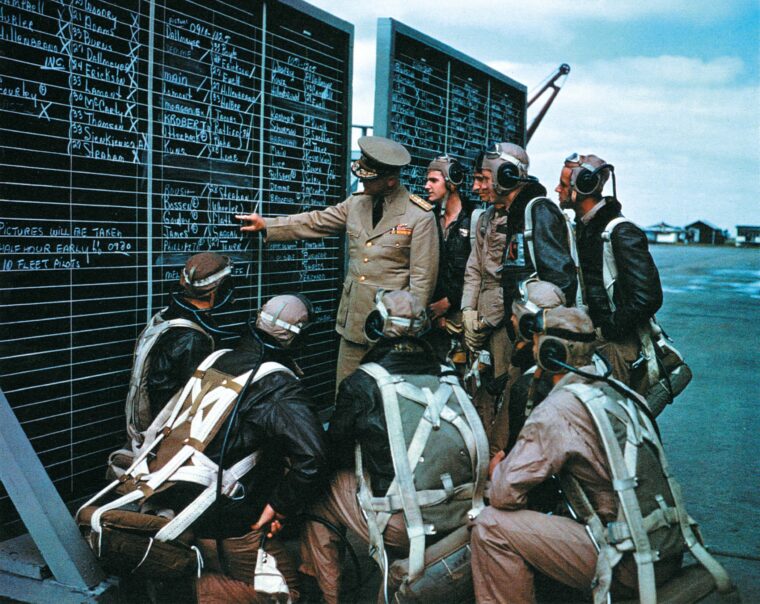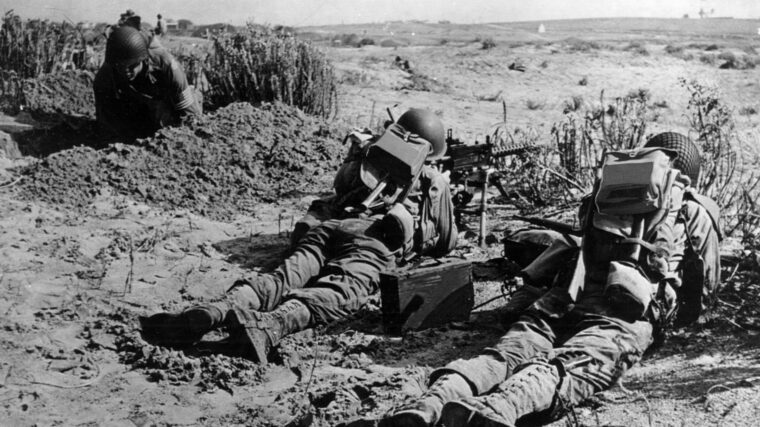
WWII
The Sinking of I-35
By Peter McQuarrieIn the autumn of 1943, the U.S. Navy had regained strength after the Japanese attack on Pearl Harbor, and plans were made for a big offensive in the Pacific. Read more


WWII
In the autumn of 1943, the U.S. Navy had regained strength after the Japanese attack on Pearl Harbor, and plans were made for a big offensive in the Pacific. Read more

WWII
On March 12, 1938, German troops entered Austria, part of Adolf Hitler’s plan to incorporate that hapless country into the Third Reich. Read more

WWII
The grimy, weary Marines heard with little emotion the instructions shouted by their officer. He wanted them to mount yet another charge to the top of the nondescript hill blocking their way, another collection of rock housing an enemy that tried to halt their advance. Read more

WWII
Planning a war requires assumptions. However, there should be as few assumptions as possible, otherwise one can assume away all one’s problems. Read more

WWII
Rain battered the shore and the seas were rough on the night of October 21, 1942. Under the surface of the water, a submarine carried the Allies’ best hope for turning the tide of war in 1942. Read more

WWII
The U.S. 9th Armored Division arrived in the European Theater of Operations in late October 1944 as a reserve for Maj. Read more

WWII
In December 1941, after four decades of play in the same sixteen eastern and midwestern cities, major league baseball was finally coming to the west coast. Read more

WWII
He suffered from acute alcoholism and severe bouts of depression. As a result of his heavy drinking, he would wander about for days yelling incoherently. Read more

WWII
Most writings about World War II tend to attribute the success or failure of military operations to the skill with which generals and admirals handled their forces in battle and to the fighting abilities of soldiers, sailors, and airmen. Read more

WWII
With the defeat of the German Seventh Army and the closing of the Falaise Gap in the summer of 1944, the Allies pursued the retreating enemy across France. Read more

WWII
With bond clerk Marge Henning standing by as a witness, Colonel Frank Eldridge removed the first piece of the puzzle. Read more

WWII
On May 6, 1942, in the Malinta Tunnel, Corregidor Island, General Jonathan Wainwright waited for the Japanese to respond to his surrender offer with a cease-fire. Read more

WWII
Donald L. Versaw joined the U.S. Marine Corps on Armistice Day, November 11, 1939. After basic training and a stint in the Marine Corps Operating Base Band in San Diego, he was sent overseas to join the Fourth Marines Band in Shanghai. Read more

WWII
The German Army found itself facing a massive challenge in the spring of 1944, just months before its total disaster at the Battle of Brody — they were facing the possibility of a war on three fronts. Read more

WWII
It was unbelievably dull and uncomfortable duty, often interspersed with moments of sheer terror and the possibility of sudden and violent death. Read more

WWII
In February 1945, General Douglas MacArthur was poised to begin one of the great battles of his career. Read more

WWII
In most popular spy thrillers, secret agents are tall, handsome, virile, and irresistible to women. Whether their name is Dirk Pitt, Jack Ryan, or James Bond, all are hard-drinking, well-tailored ladies’ men. Read more

WWII
Up front, guns chattered. Out back, in his pressurized compartment aboard a Boeing B-29 Superfortress bomber high over Japan, Andy Doty heard a warning shouted over the intercom. Read more

WWII
This is a story of what might have been. If Japan had chosen to attack far-off British Malaya on December 7, 1941, instead of Pearl Harbor, Hawaii, President Franklin Roosevelt was prepared to go before Congress and ask—for the first time in American history—for a declaration of war against a nation that had not fired the first shot against us. Read more

WWII
During World War II, the U.S. Navy built more than 1,000 destroyer escorts, ships whose primary duty was to escort supply convoys across the world’s oceans to insure that their precious cargo of food, fuel, war material, and personnel got to their destinations safely. Read more